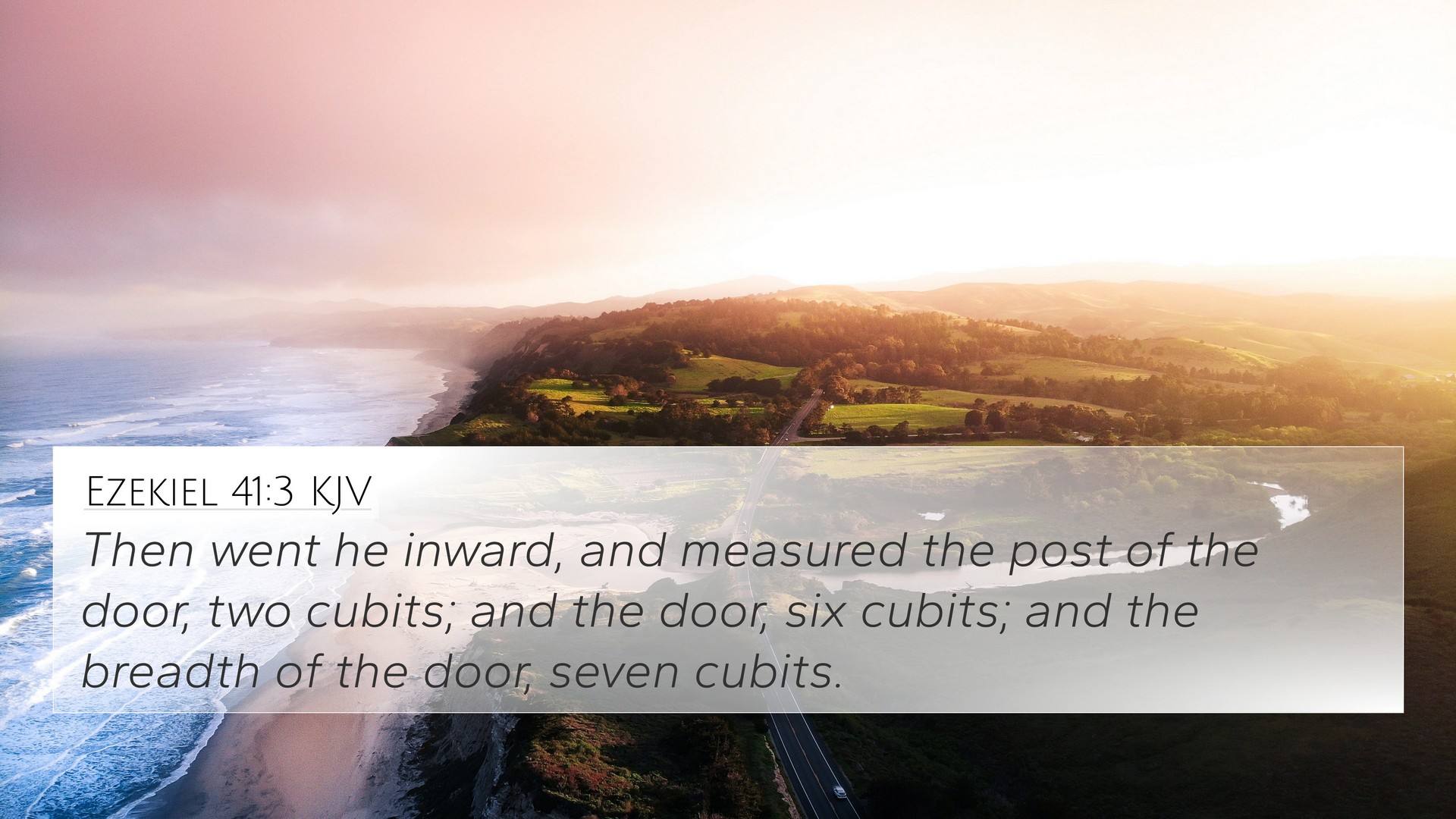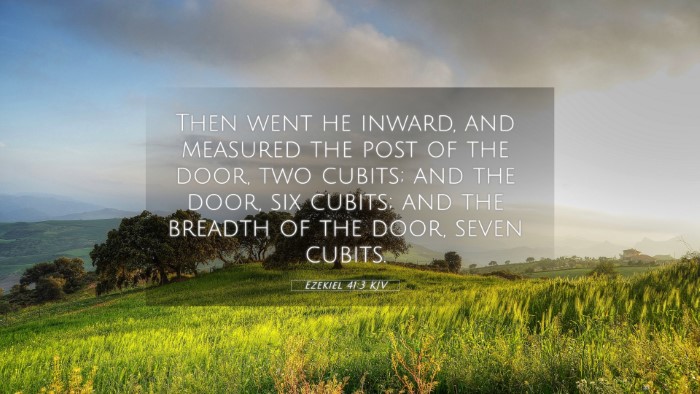Ezekiel 41:3 - Meaning and Commentary
Ezekiel 41:3 reads: "And he went in and measured the post of the door, two cubits; and the door was six cubits; and the breadth of the door was seven cubits." This verse stands as part of Ezekiel’s extensive vision of the temple, offering profound insights into both literal and symbolic interpretations.
Interpretation and Significance
The verse describes the measurements of the temple's entrance, representing a careful and divine order established by God. The details provided by Ezekiel emphasize the precision of God's plans and the importance of the dimensions within His sacred space.
Insights from Commentaries
- Matthew Henry: Henry highlights the meticulous nature of Ezekiel's vision, suggesting that God’s structured design for the temple foreshadows His intricate plans for worship and the need for reverence in approaching God.
- Albert Barnes: Barnes points out that such specific measurements imply God's authority and holiness associated with the temple. The measurements also signify the separation between the sacred and the common, a theme prevalent throughout scripture.
- Adam Clarke: Clarke adds that the mention of cubits indicates the necessity of understanding sacred geography, connecting the spiritual realm to physical spaces designed for divine worship.
Bible Verse Cross-References
This verse can be linked to various other scriptures that enhance its meaning and provide a clearer understanding of its themes:
- 1 Kings 6:2: Describes the dimensions of Solomon's temple.
- Revelation 21:15: Mentions the measuring of the New Jerusalem, highlighting God's continuous role in the design of sacred spaces.
- Isaiah 66:1: God's throne and the earth as His footstool illustrate the grandeur of what He governs.
- Exodus 25:9: Instructions for the tabernacle; God’s importance of details in worship settings.
- Ezekiel 40:3: Specifies the beginning of Ezekiel’s vision and measuring of the temple, contributing to the broader understanding of holiness.
- Matthew 21:12: Jesus cleansing the temple correlates to the significance of purity within the sacred spaces.
- Hebrews 8:5: Refers to the tabernacle's design, suggesting it was a copy of heavenly things.
Thematic Bible Verse Connections
The connections between this verse and others provide a thematic continuity that enhances our understanding of temple worship, holiness, and God’s divine architecture.
Cross-Referencing Biblical Texts
When we engage in cross-referencing these texts, we find a pattern emerging regarding God’s instructions for the sacred. The act of measuring is not merely about geometry but about establishing sacred boundaries and reconciling the divine with humanity.
Tools for Bible Cross-Referencing
Utilizing tools and resources such as a Bible concordance and a Bible cross-reference guide can deepen our understanding and uncover further connections, revealing the interwoven narratives across scripture.
Bible Reference Resources
- Explore Bible chain references that link themes across both testaments.
- Utilize a cross-reference Bible study method to identify connections between key passages.
- Consider comprehensive Bible cross-reference materials that lay out relations for enhanced narrative understanding.
Conclusion
In conclusion, Ezekiel 41:3 serves as more than a mere detail within the narrative of the temple; it opens doors to understanding the holiness and structure of God's design. Through thematic Bible verse connections and scriptural cross-referencing, we gain insights into God’s overall plan for the world and His desire for a sacred relationship with humanity.
User Intent Considerations
For those seeking to delve deeper, ask What verses are related to Ezekiel 41:3? or How do these verses connect with themes of worship? Answering these questions can illuminate broader theological themes, allowing for a more holistic understanding of scripture as a unified narrative.



